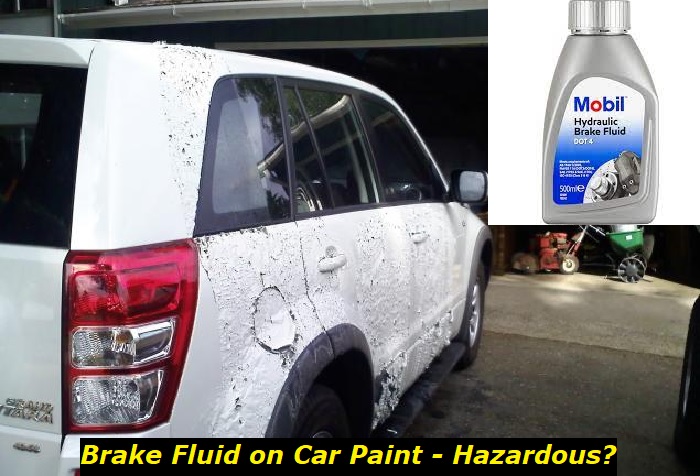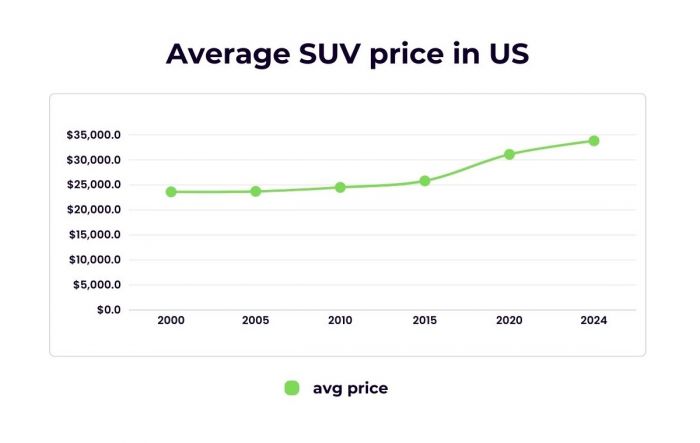Your car uses a number of fluids for various operations. It requires plain water for the wipers, gasoline for the fuel tank and transmission fluid for the smooth operation of the tranny. Putting any of the fluids in the wrong place or tank will likely lead to devastating consequences.
Brake fluid problems highlights
- Level of urgency:super-urgent
- DIY diagnostics:usually,impossible
- DIY repairs:impossible
- Price for repair:$250 - $650
- Common symptoms:pedal goes to the floor, braking efficiency low, leaks
- Commonreasons:brake lines leaking, low fluid,badfluid
- If ignored:no brakes, getting into accidents, poor safety when driving

Uses of brake fluid
This should not be a topic for an experienced driver who has time and again bought or changed the brake fluid for their car. However, it is worth noting that brake fluid is a hydraulic fluid used for hydraulic brake and clutch. The fluid is glycol-ether based and is commonly graded starting from DOT 3 all the way to DOT 5.1.
Glycol ethers are chemical compounds consisting of alkyl ethers. Based on glycols, these alkyl ethers are used as solvents in cleaners and paints. They contain high solvent properties and are good paint solvents because they have a high boiling point. Now, you can imagine why brake fluid may not be good on your car paint.
Among the fluid levels you should check regularly is brake fluid. If there is a brake fluid leak or contamination, you should add or change it to ensure the braking system operates optimally. The brake fluid reservoir is found under the hood and is clear in color.
Brake fluid is usually sold at service stations or general stores. Because the driver can easily monitor the fluid level, it is generally expected to be one of the fluids one can top up, even at home. While topping up the brake fluid, you may accidentally spill some on the car. Someone may also misinform you about using brake fluid to remove a stain on your car.
Will brake fluid damage the paint on your car?
As stated earlier, brake fluid is glycol-ether based, so it should not be poured on car paint. The glycol contains molecules that make it a very effective solvent compound for paints. Brake fluid spill may not have such a big effect on relatively new cars and those done waxing. However, a brake fluid spill will cause some damage in old cars with poor-quality old paint.
When brake fluid is poured on your car and left to sit, it will start breaking down the outer layer of the paint. Where the quality of car paint is poor or old, the fluid can eat away an entire coat to reveal the underlying metal of the car. This kind of damage will also be experienced when brake fluid is left to sit for an extended period of time.
So yes, brake fluid will damage the pain of your car. The compounds in the brake fluid act as a solvent on car paint, which means the reaction takes time. The extent of the damage the fluid can cause on the paint depends on the quantity but more on the time it's left to settle on the car.
How long does it take brake fluid to damage the paint?
Whenever some brake fluid gets spilt on your car, it is advisable to clean it right away. The more it stays on the paint, the more damage it will do. Below is the timeframe, which should help you know the extent of damage you should expect after brake fluid lands on your car.
- 0 to 5 minutes - This is the best time to clean any brake fluid spilt on your car. When done properly, you are likely not to eliminate any danger of damage to the car paint. Even if the brake fluid had started to react with the outer coat of paint, the damage would likely be unnoticeable.
- 5 minutes - When brake fluid is left to settle on car paint for 5 minutes, it will leave some marks, albeit dull ones. The car's clear coat, which is the topmost layer, becomes compromised. The damage can be seen even by a passerby for cars with poor quality or old paint. If your car has been waxed, there will likely be no damage.
- 10 minutes - At this stage, the solvents in the brake fluid have already done visible damage. The clear coat will be ruined, and at a glance at your car, a person can tell there was some fluid poured on your car and you didn't clean it properly.
- 30 minutes - At this stage, the stripes made by the brake fluid can be seen from afar. Even a passerby will tell you there is some damage to your pair. The damage witnessed from this point onwards remains more or less the same.
How should you clean brake fluid?
Brake fluid should be cleaned in a specific way to prevent spreading or smearing it across the car, causing more damage. Here are the steps to follow to remove the fluid from the car as soon as possible;
- Soak up the fluid - As highlighted above, you should not wipe brake fluid but rather use a paper towel to soak up as much as possible. To help remove the brake fluid fast, press the paper towel on it so that most of it is absorbed fast.
- Wash the affected area - After soaking up all the brake fluid with a paper towel, it is now time to wash the remnants with clean water and a washing detergent. Ordinarily, an accident involving brake fluid spillage will not happen where washing detergent can easily be accessed. This being the case, you can use any soap to wash away the brake fluid. Use a wet rag to help you remove all the fluid from the car's surface.
- Rinse - Douse the cleaned part with clean water. This will remove all traces of brake fluid. Using plenty of water on the car where the brake fluid spilt also helps to neutralize any fluid that might fail to come off and stop its corrosive effects.
What to do to save your car from brake fluid damage?
There are times when brake fluid might spill on your car without you knowing. The stains and marks will be seen later on, and even after washing, the marks won't come off. Brake fluid will leave a stubborn stain on your car, and only a professional will help you solve the problem.
Brake fluid and paint will never mix, and when left to set on car paint, brake fluid will eat away or cause corrosion to the extent of exposing the metal parts under the paint. Exposing the metal of the car body means extensive corrosion and rust will now happen because of the exposure to humid air.
Once you notice brake fluid marks, it is time to take the car to a cap paint expert. The expert will paint the car with the right color code to ensure the paint on the car is uniform. The expert will read the paint code, usually written on the door frame on the passenger side. They will mix paints to come up with the right match.
The problem with trying to paint the brake fluid marks yourself is that you risk painting the wrong color. Car painters use computers to get the exact code of the color of your car. This then means they can paint just the patch where the marks are, and there won't be any difference.
Car paint cans are quite popular for repair work. Using this can paint is also risky because, in almost all instances, you will end up with a patch where the can paint is applied. So, we insist on having an expert help you restore your car paint. Wax the car after the paint job to further enhance the value of your car and prevent future damage by brake fluid spillage.
Conclusion
Brake fluid is an essential fluid in your vehicle. It serves several functions that make your car drivable and safe to operate. However, applying the brake fluid in or on the wrong places, such as on the car's body, can lead to damage and losses. In the article, we learned of the damage brake fluid causes when poured on a car. We have also learnt how to deal with the fluid when it pours on your car. But the best solution is to handle brake fluid with care and avoid spilling it on the car.
About the authors
The CarAraC research team is composed of seasoned auto mechanics and automotive industry professionals, including individuals with advanced degrees and certifications in their field. Our team members boast prestigious credentials, reflecting their extensive knowledge and skills. These qualifications include: IMI: Institute of the Motor Industry, ASE-Certified Master Automobile Technicians; Coventry University, Graduate of MA in Automotive Journalism; Politecnico di Torino, Italy, MS Automotive Engineering; Ss. Cyril and Methodius University in Skopje, Mechanical University in Skopje; TOC Automotive College; DHA Suffa University, Department of Mechanical Engineering






Add comment